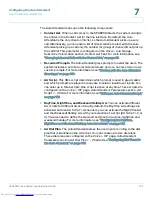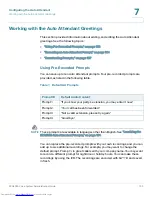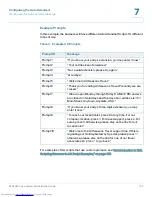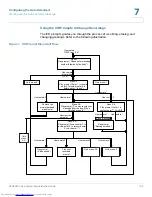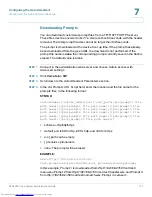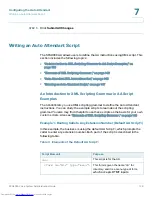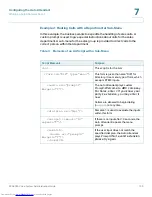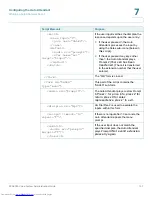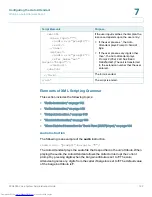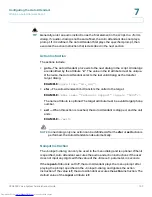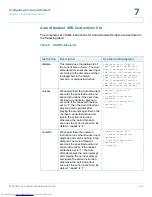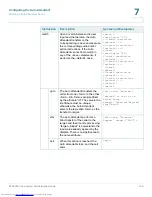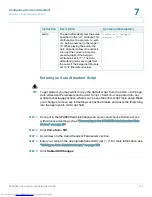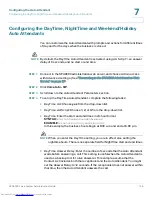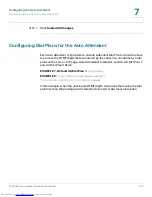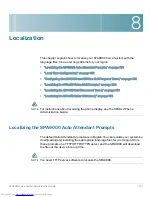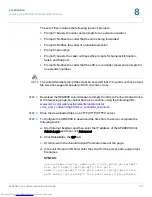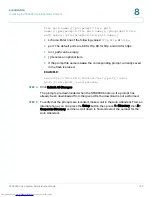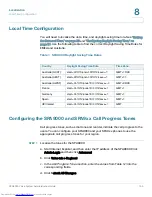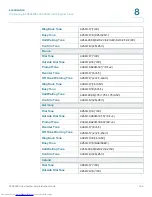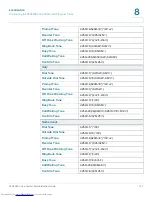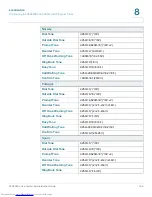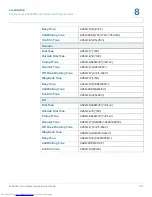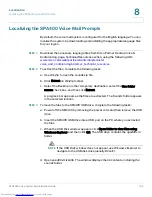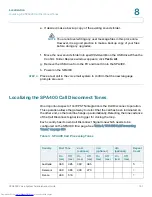
Configuring the Auto Attendant
Writing an Auto Attendant Script
SPA9000 Voice System Administration Guide
146
7
match
Upon a match between the user
input and the dial plan, the Auto
Attendant transfers to the
corresponding <case> and execute
the corresponding audio and/or
action instructions. If the Auto
Attendant cannot find a match in
any of the <case> statements, it
performs the <default> case.
<match >
<case input= “x”/>
<!--audio instruction
(optional) -->
<!--action instruction
(optional) -->
</case>
<case input= “#”/>
<!—audio instruction
(optional) -->
<!--action instruction
(optional) -->
</case>
<default>
<!—audio instruction
(optional) -->
<!--action instruction
(optional) -->
</default>
</match>
goto
The Auto Attendant transfers the
caller from one <form> to the other
<form>. All <form>s are identified
by the attribute “id”. The value in the
id attribute must be unique;
otherwise, the Auto Attendant
selects the last valid <form> as the
transfer-to target.
<goto link= “daytime”>
“daytime” is the id of a
<form> entry.
Example: <form id=”daytime”
type=”menu”>
xfer
The Auto Attendant performs a
blind transfer of the caller to the
target, and then it ends processing
“target = $input” is equivalent to the
input value already passed by the
dialplan. There is no significance to
the name attribute.
<xfer name= “Technical
Support” target= “5000”/>
exit
When this action is reached, the
Auto Attendant stops, and the call
ends
<exit>
Instruction
Description
Syntax and Example(s)
Downloaded from
www.Manualslib.com
manuals search engine

